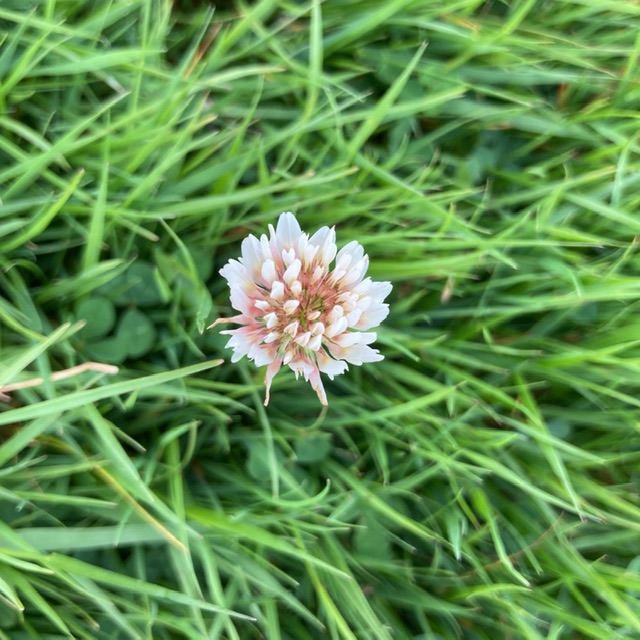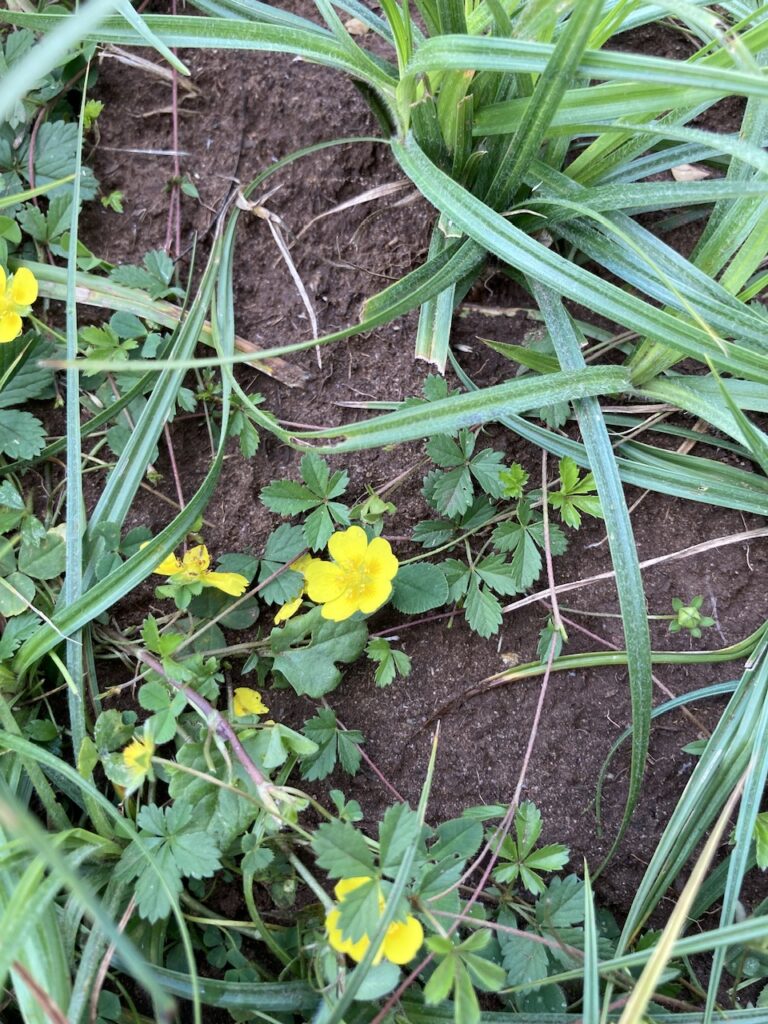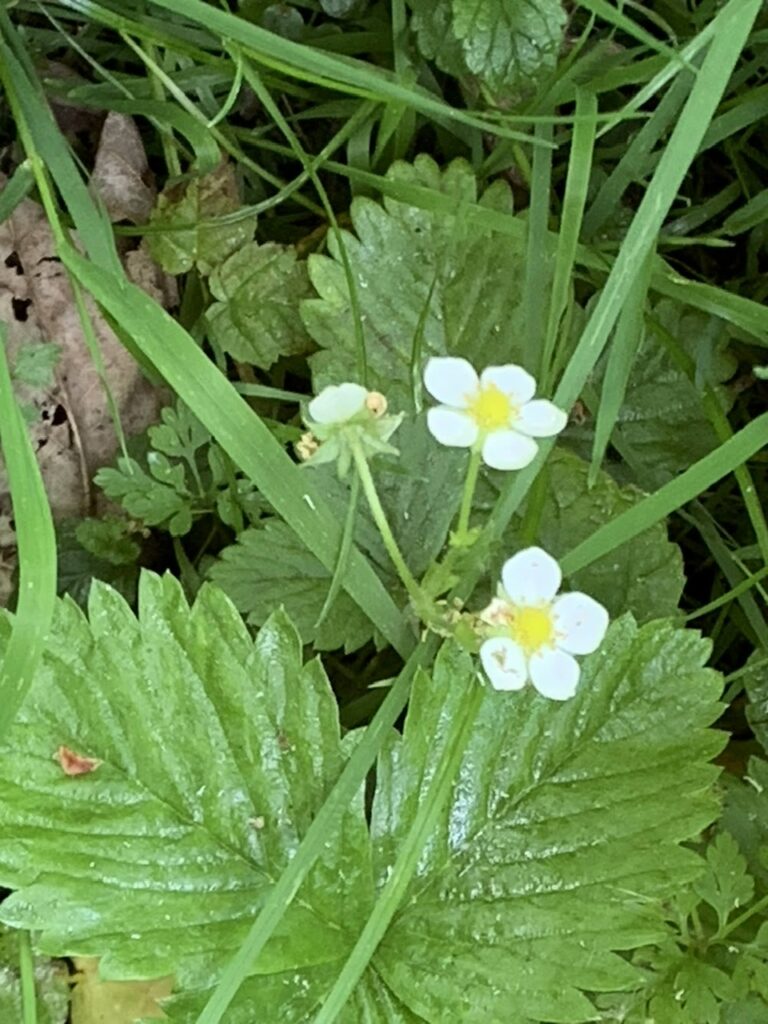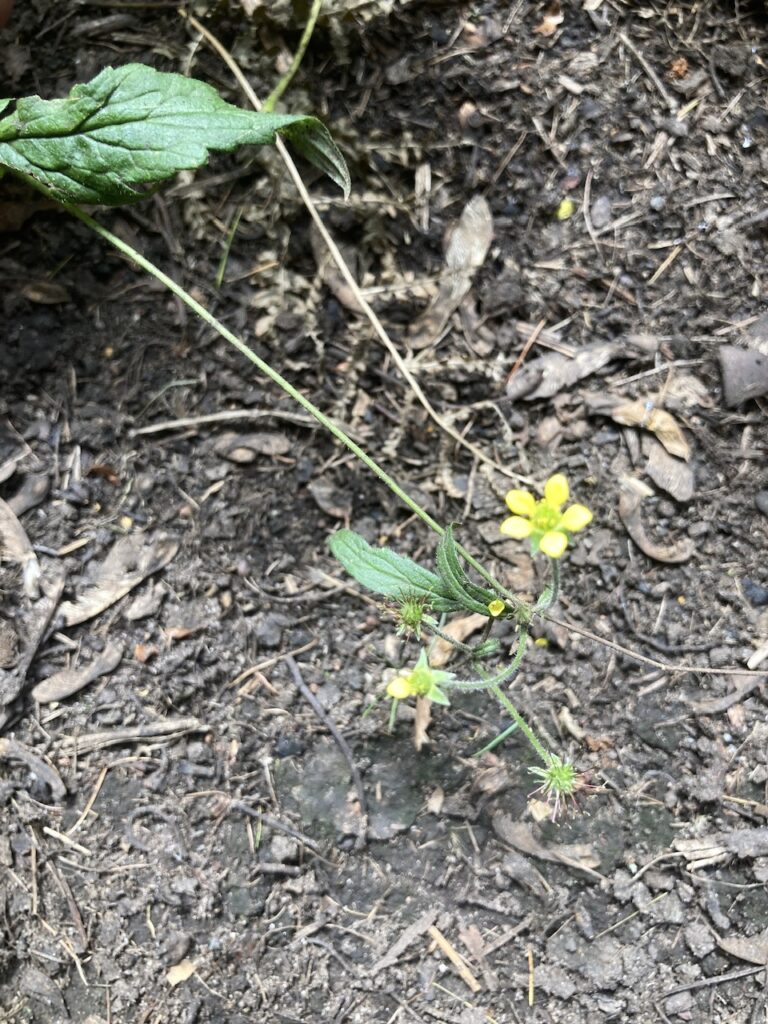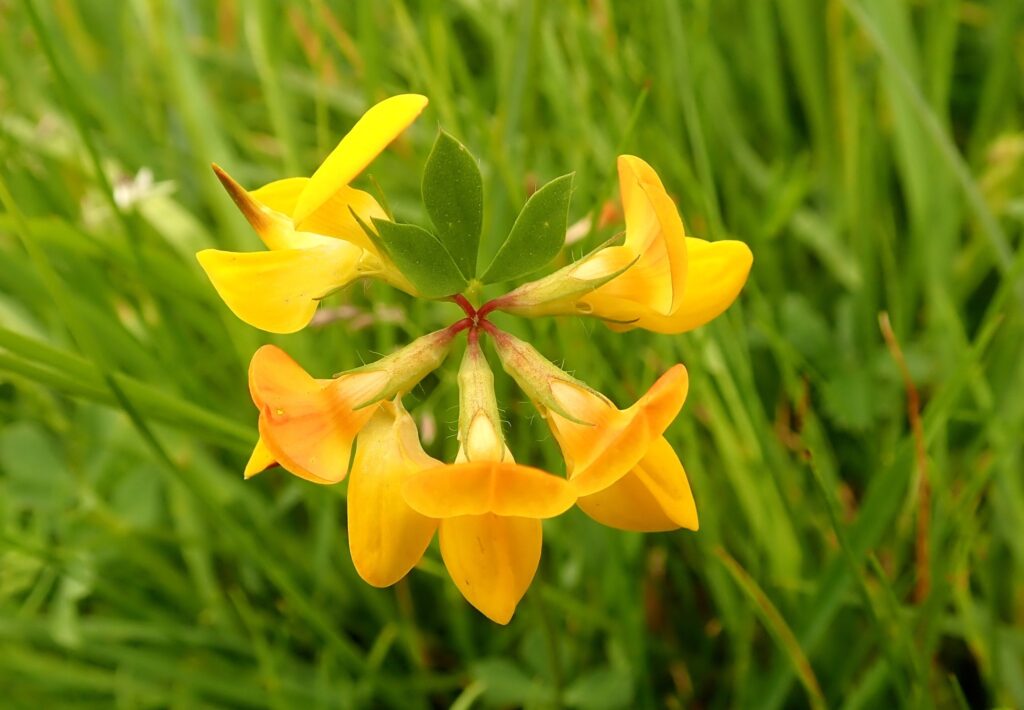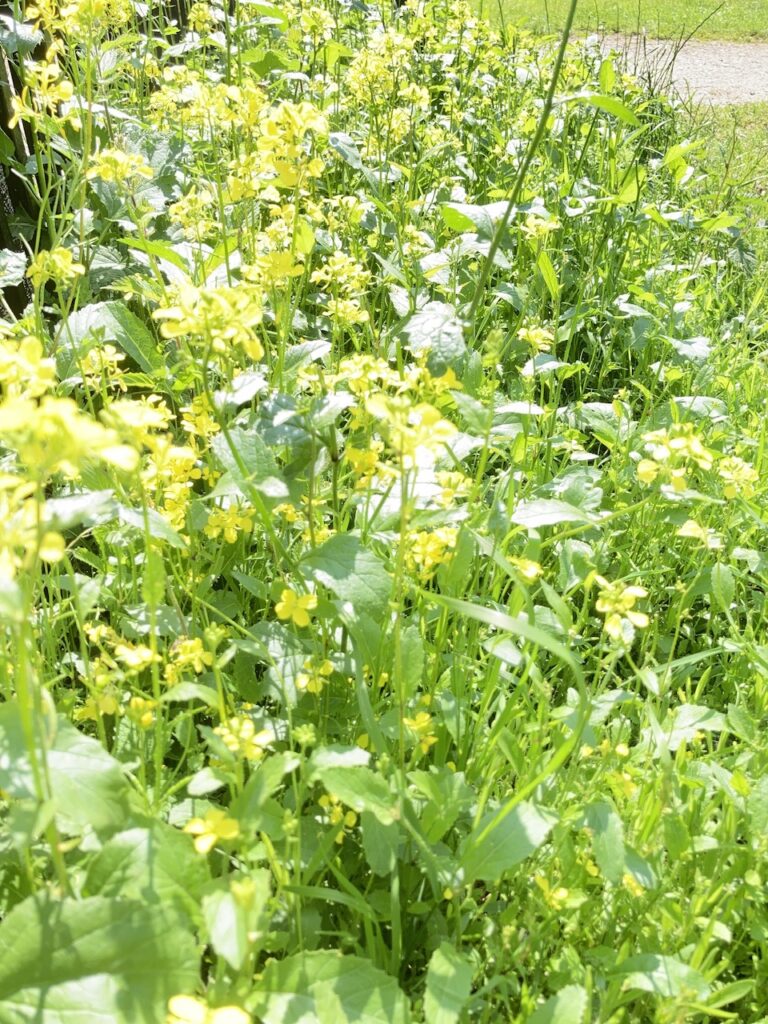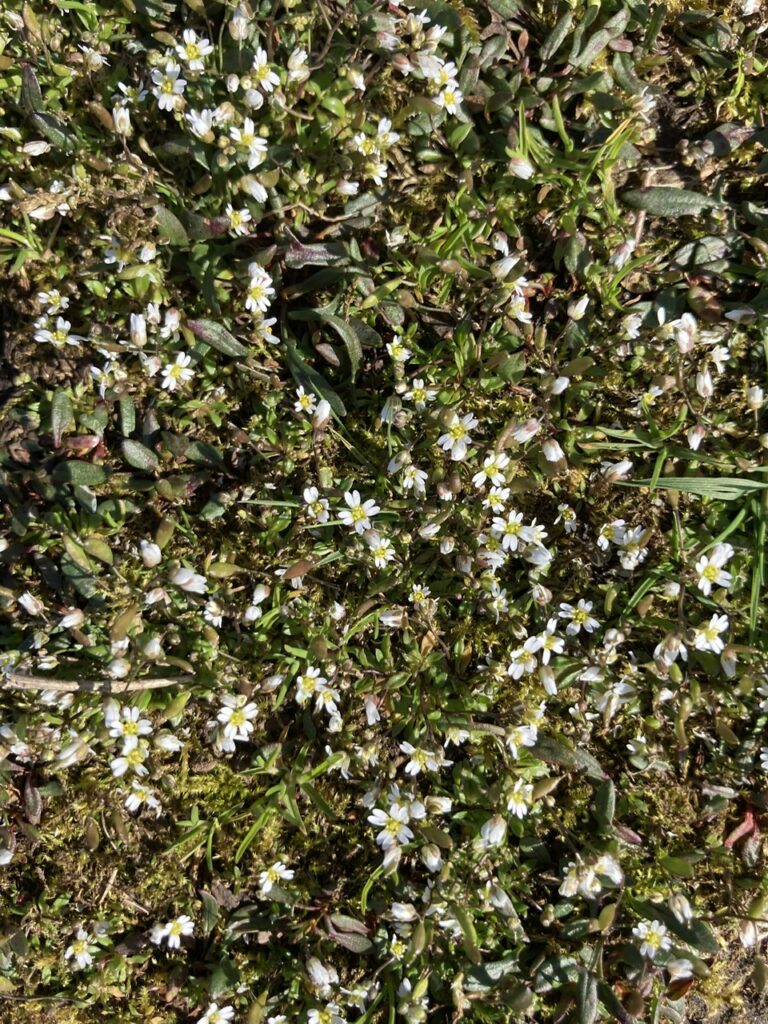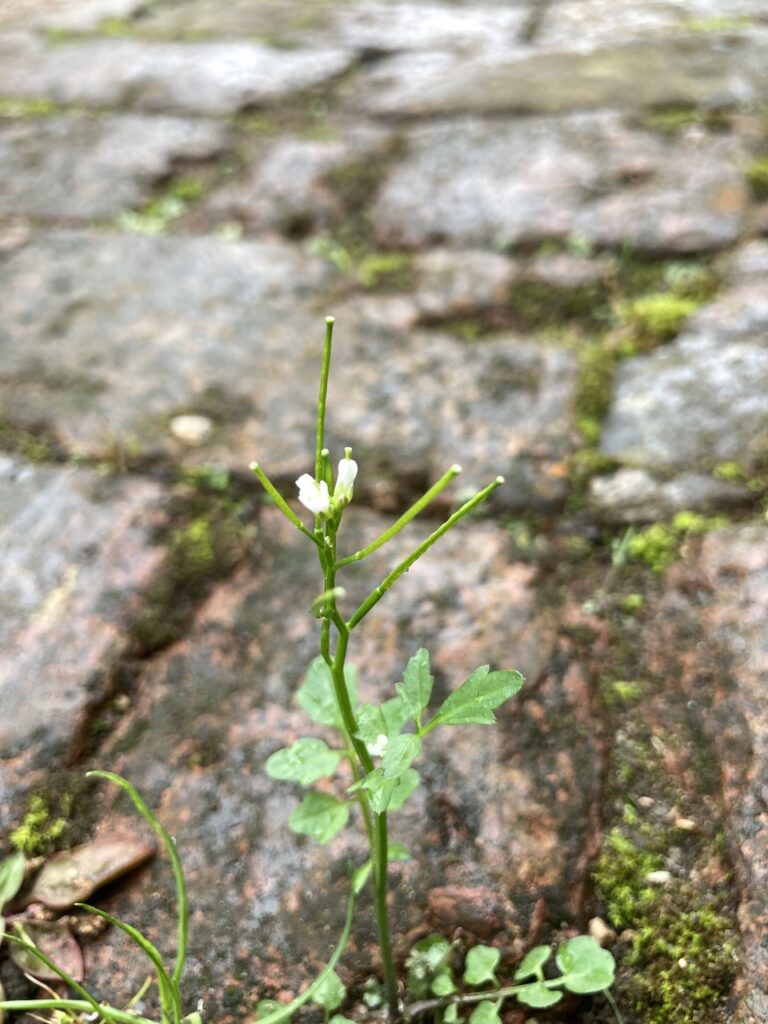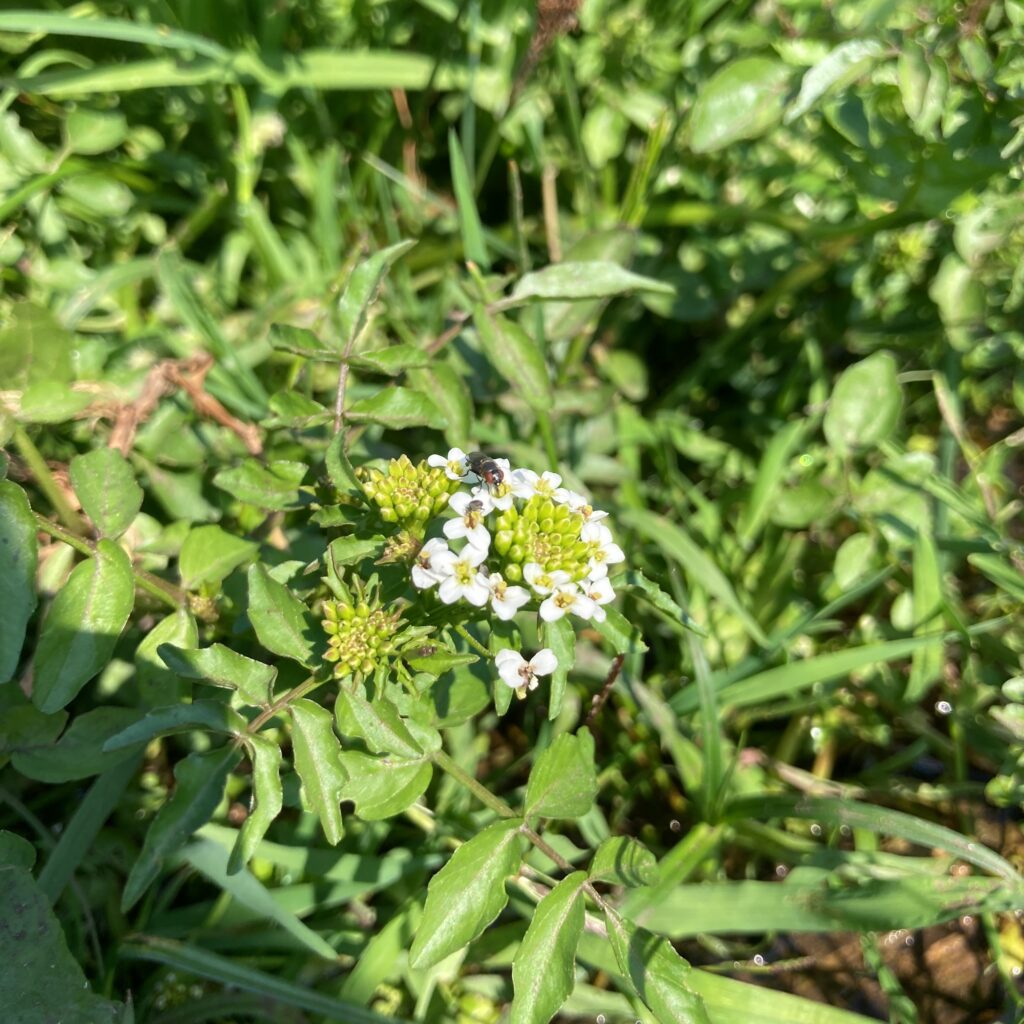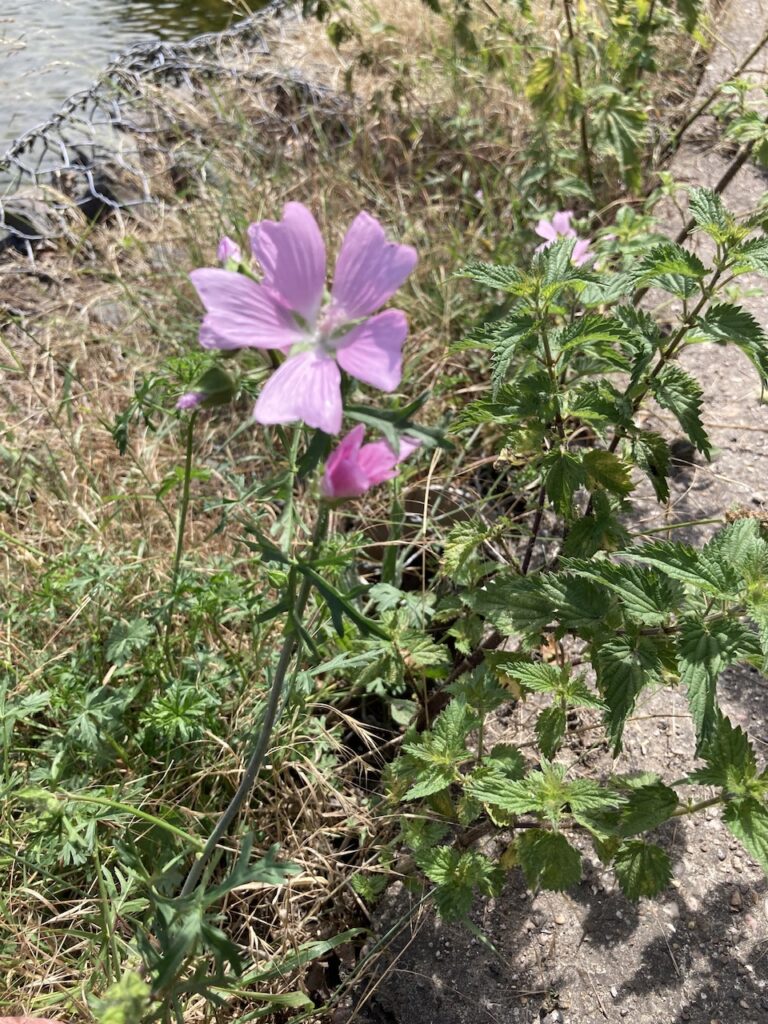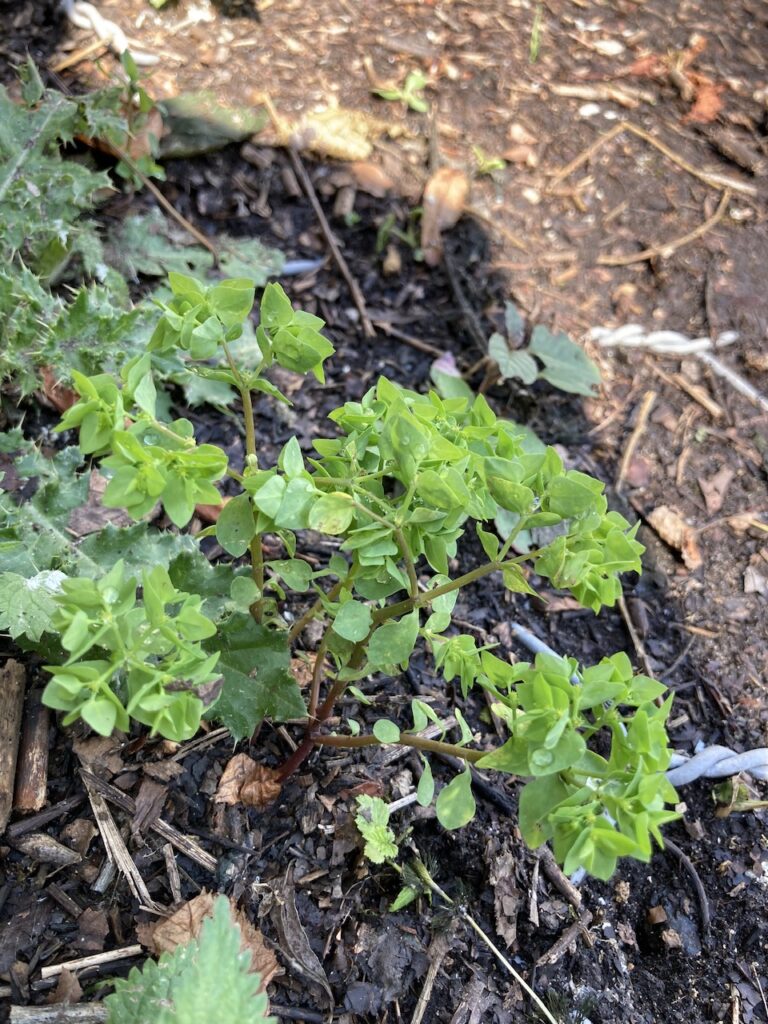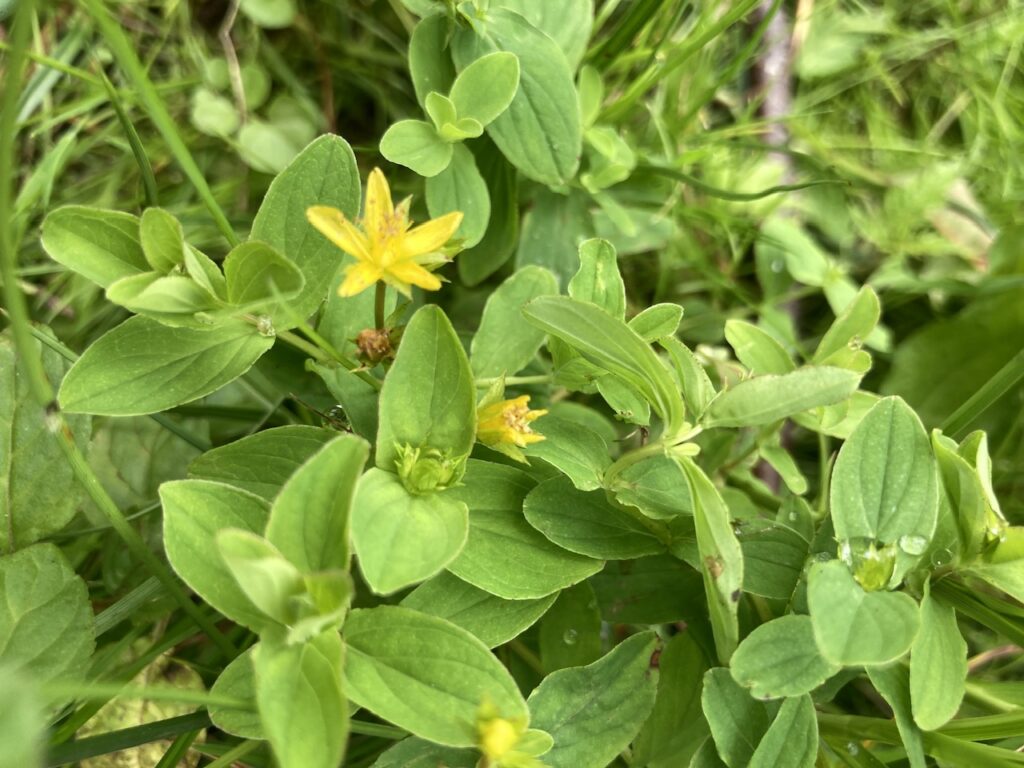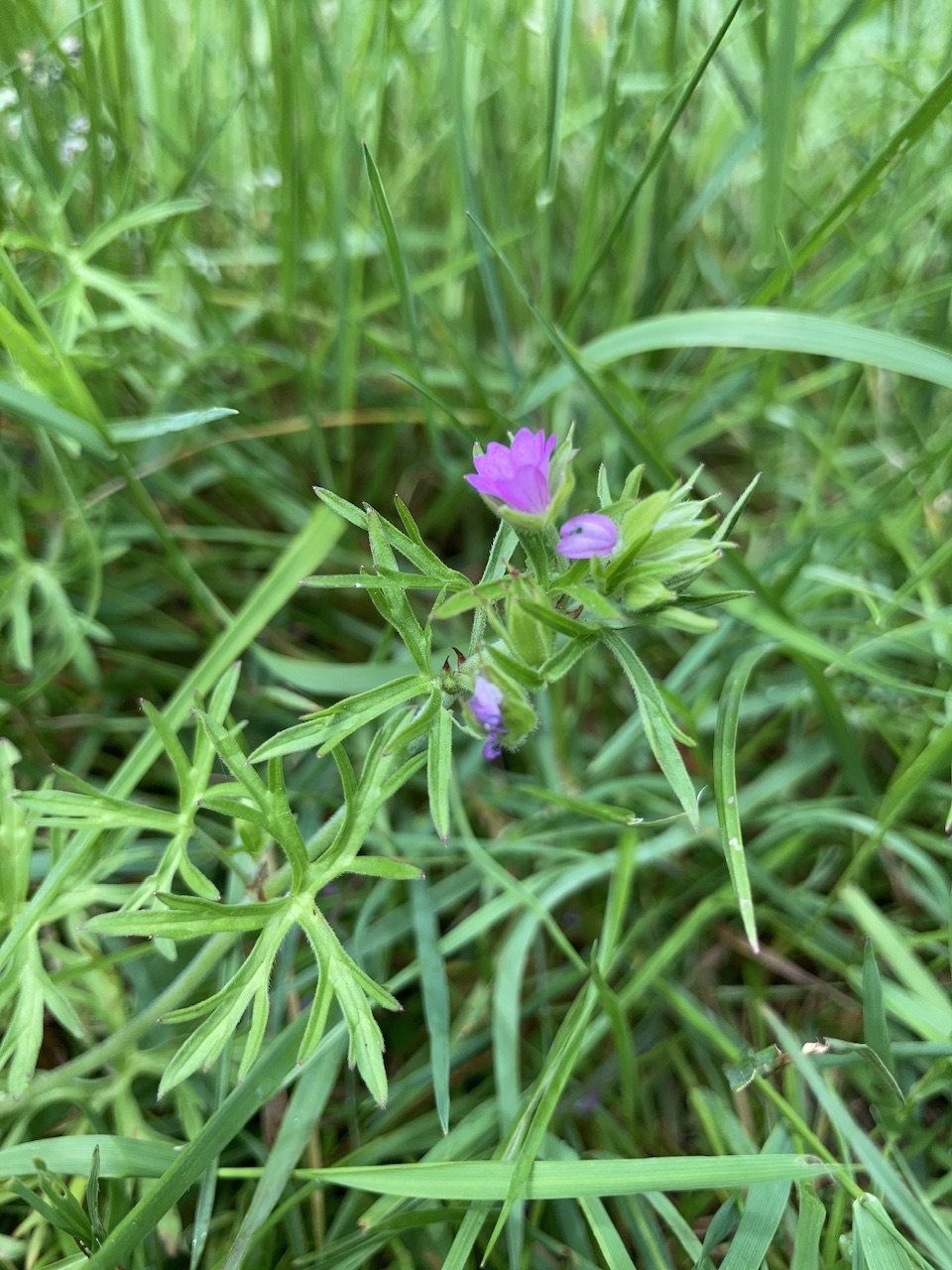All of the wildflowers on this page are members of the Rosids order.
See also our Rosids Tree Gallery.
Rose Family
Silverweed

Potentilla anserina.
The plant produces yellow flowers that resemble small buttercups. The flowers have five petals and bloom in late spring to early summer.
Tormentil
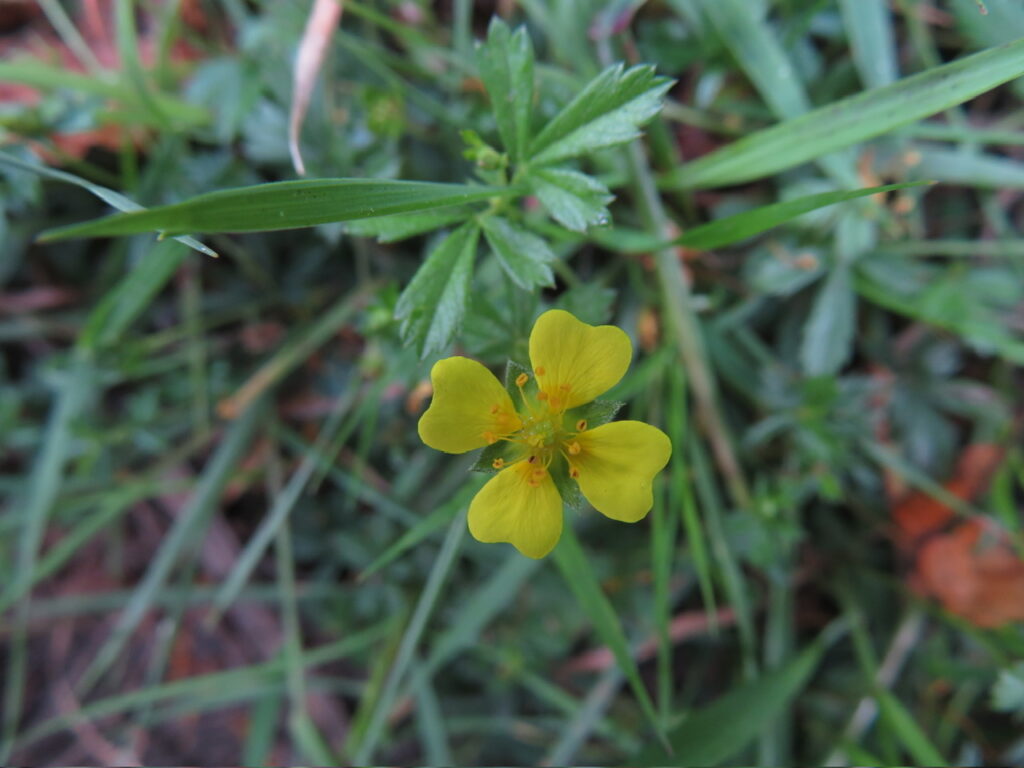
Potentilla erecta.
Tormentil is a low-growing, creeping perennial plant with yellow flowers that bloom from May to September. It is found in acid grassland, heathland, and moorland.
Pea Family
Gorse

Ulex europaeus.
Gorse is an important habitat for wildlife, providing shelter for birds, small mammals, and invertebrates, but can be a problematic invasive species.
Cabbage Family
Garlic Mustard
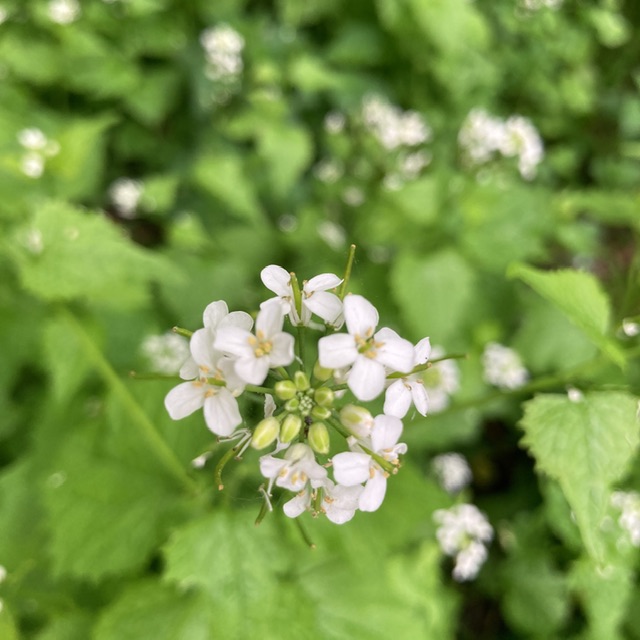
Alliaria petiolata.
Garlic Mustard is an invasive herbaceous plant native to Europe. It has heart-shaped leaves with a garlicky aroma when crushed. Garlic Mustard produces small clusters of white flowers and spreads rapidly, outcompeting native plants. It poses a threat to biodiversity in woodland areas and is challenging to control.
Hedge Mustard

Sisymbrium officinale.
Hedge mustard is a biennial or perennial herbaceous plant. It has deeply lobed leaves and produces small clusters of yellow flowers. Hedge mustard is commonly found in hedgerows, roadsides, and disturbed areas. It has a long history of culinary and medicinal uses.
Treacle-mustard
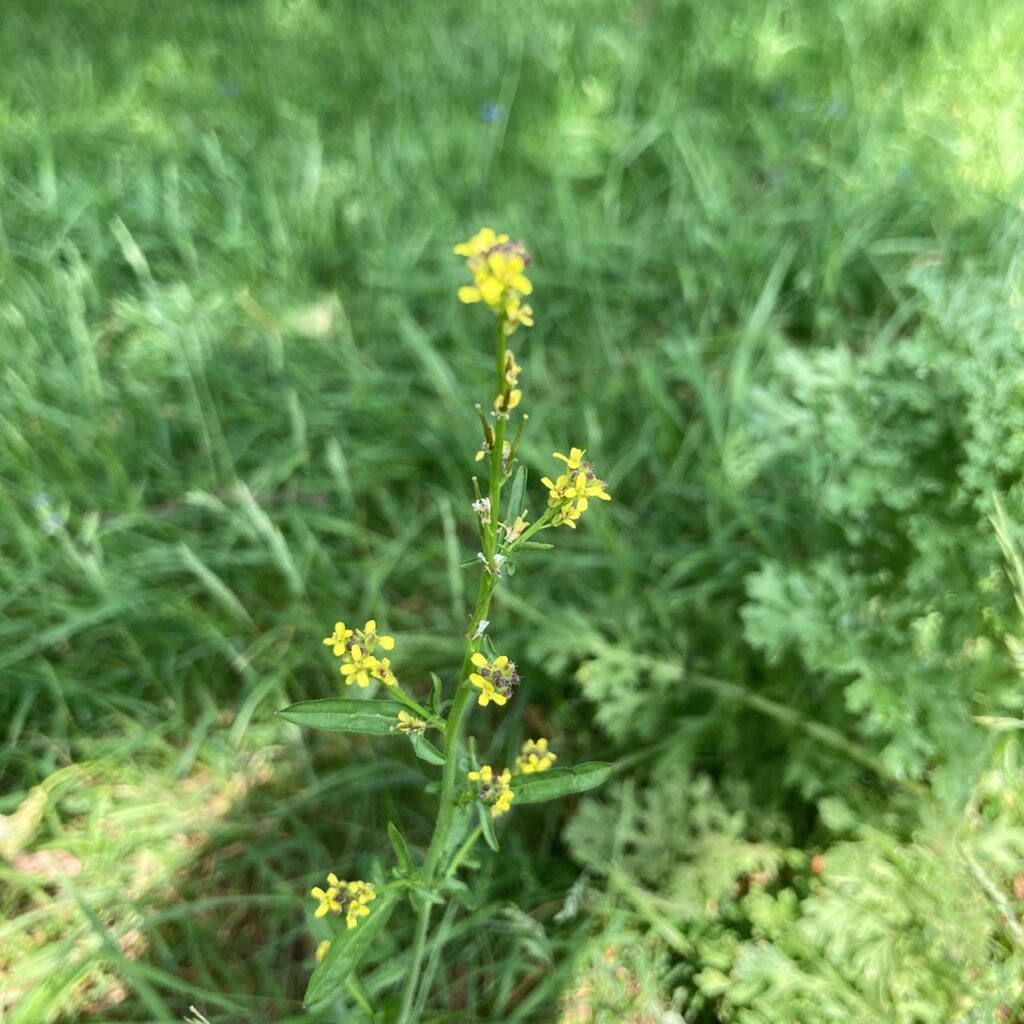
Erysimum cheiranthoides.
Treacle-mustard is an annual or biennial herbaceous plant. It is characterised by yellow flowers and narrow, lance-shaped leaves. Treacle mustard is typically found in fields, disturbed areas, and along roadsides. It is considered a weed in some regions but has medicinal uses in traditional herbal medicine.
Shepherd’s-purse

Capsella bursa-pastoris.
Shepherd’s purse is a small annual or biennial herbaceous plant that has basal rosettes of deeply lobed leaves that resemble a shepherd’s purse, hence its common name. Shepherd’s purse produces small, white flowers that have four petals arranged in a cross shape.
Cuckooflower

Cardamine pratensis.
Lady’s Smock, or Cuckooflower, is a herbaceous perennial plant. The plant produces delicate, four-petaled flowers that are usually pink or pale lilac in colour, occasionally white.
More…
Violet

Viola.
Viola is a genus with over 680 species of flowering plants. There are not many wild in the park.
Herb Robert
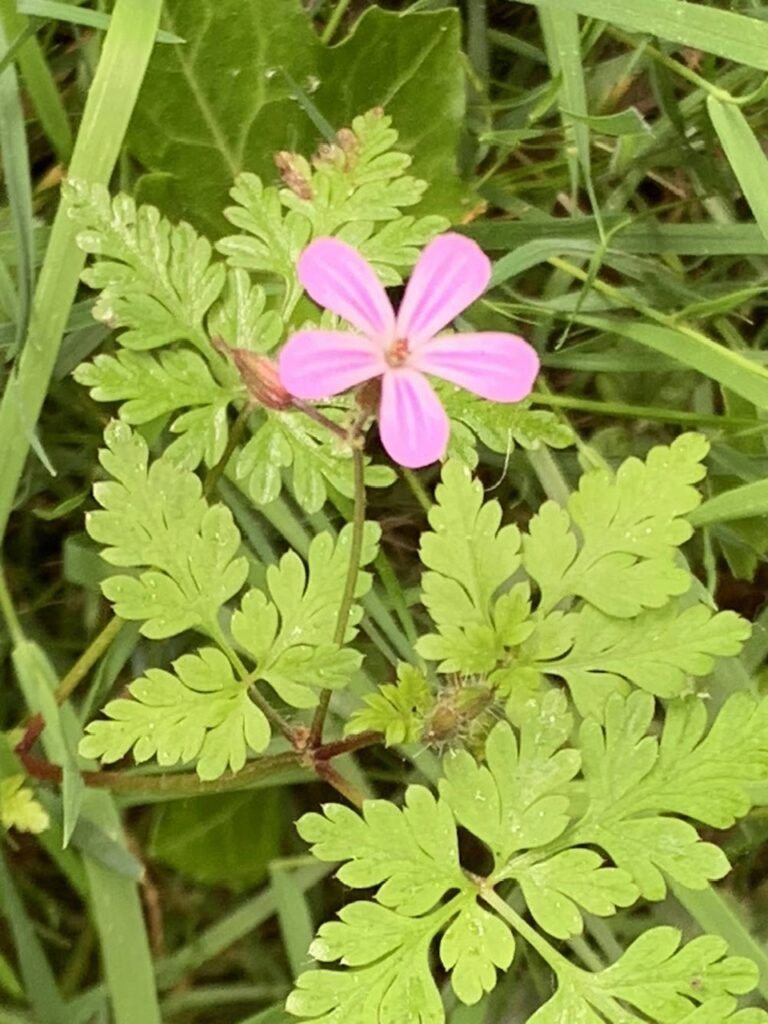
Geranium robertianum.
Geranium Family
Herb Robert is a small plant with divided leaves and pink or purple flowers. It grows in woodlands and meadows, preferring shady areas. It blooms in spring and early summer, attracting bees and butterflies. Herb Robert has a strong scent.
Willowherb

Epilobium.
Willowherb is a family of tall, thin plants with narrow leaves and pink or purple flowers.
Enchanter’s-nightshade
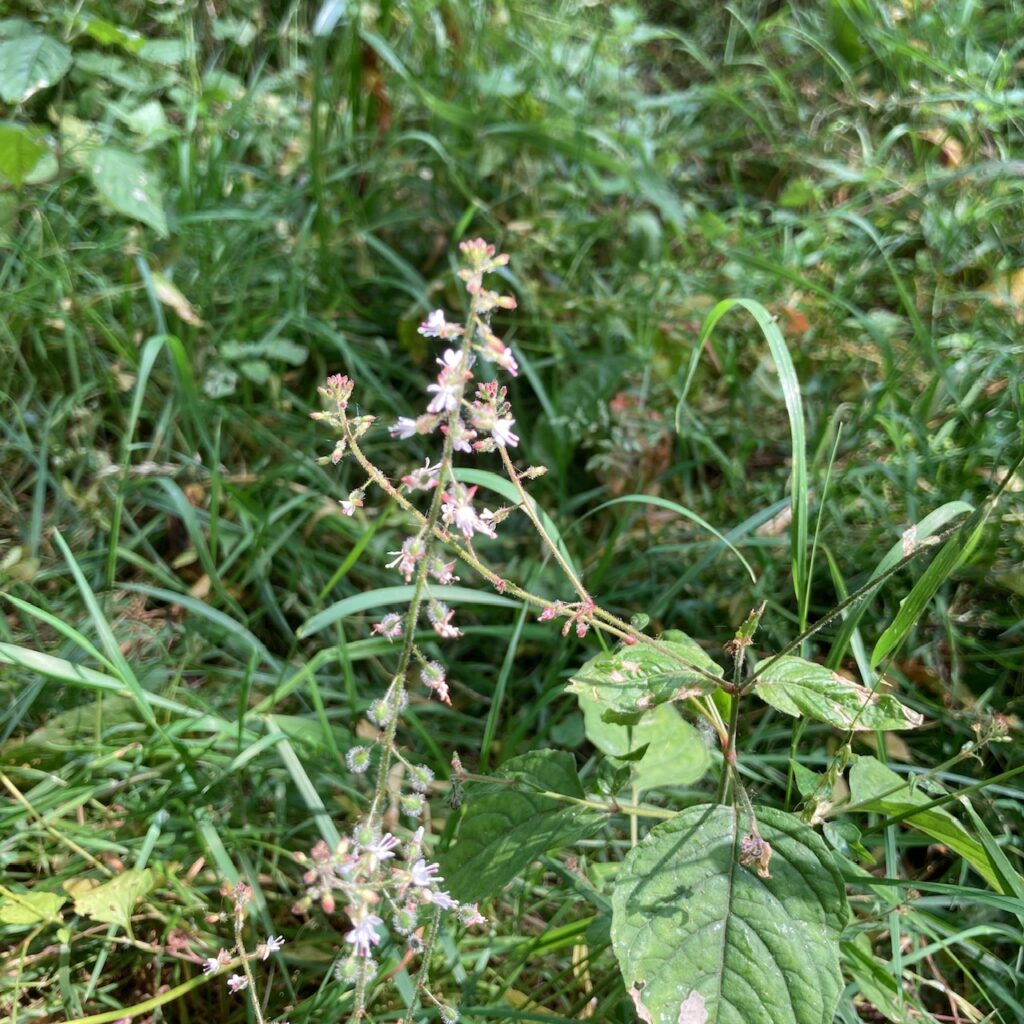
Circaea lutetiana.
Willowherb Family.
Enchanter’s-nightshade is a herbaceous perennial plant that grows in sun-dappled woodland. It has slender stems with opposite leaves and small, pinkish-white flowers with two strongly notched petals. Its fruit is an oval, one-seeded dry fruit covered in bristles with little hooks, which help it to disperse by attaching itself to passing animals and birds.
Photographs used on these Wildflower pages were taken in Wollaton Park and are reproduced with the original artist’s permission.
Credits: Colin Robbins, Gila Taylor, Chris Golightly, Kiyoko Naish, Michael Hayes, Unni Williams, Kyle Heesom, Wendy Martin.
Copyright © for each picture remains with the original artist, who is duly acknowledged and credited for each image.

